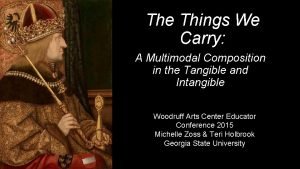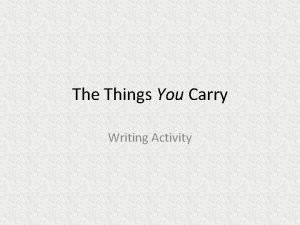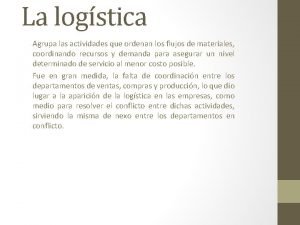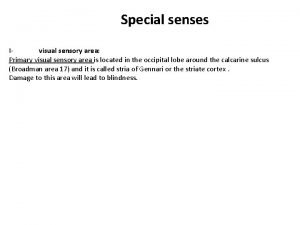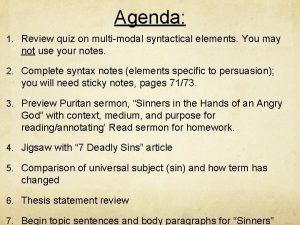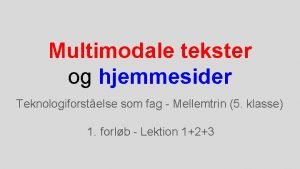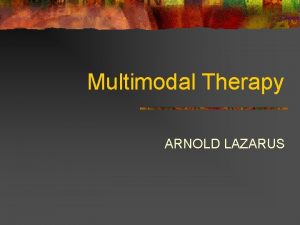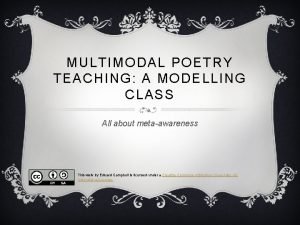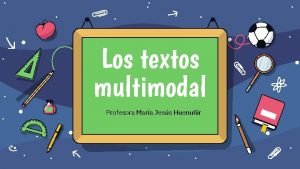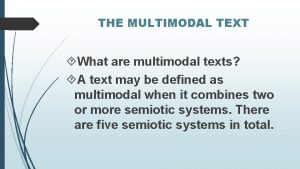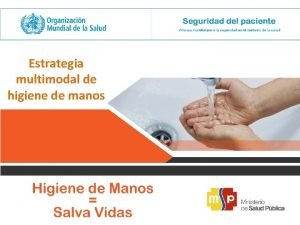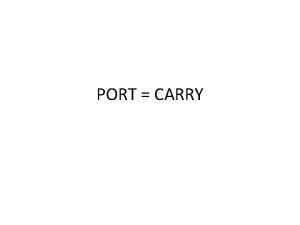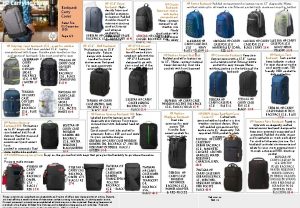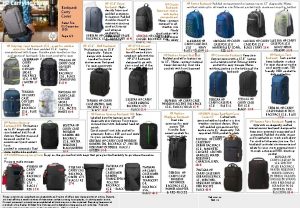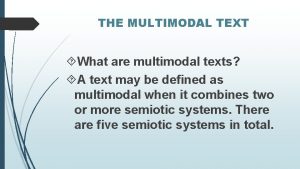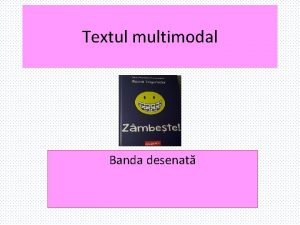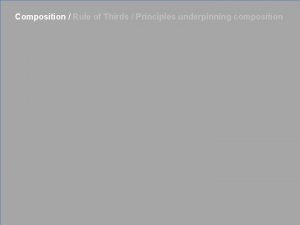The Things We Carry A Multimodal Composition in




























- Slides: 28

The Things We Carry: A Multimodal Composition in the Tangible and Intangible Woodruff Arts Center Educator Conference 2015 Michelle Zoss & Teri Holbrook Georgia State University (With an assist from Nicole Pourchier and Teri Holbrook, Georgia State University)

Introductions

Purpose Of The Session The purpose of this session is to explore how artists and teachers use words and images to depict the tangible and intangible characteristics of things they carry with them in life.

Agenda for Today Viewing, Talking, Writing, Drawing, Sharing One King, Two Queens: What do you see? The Splendor of the Hapsburgs: Tell a story Drawing Lines: Ways to shout and whisper Drawing Ourselves: Showing a story Writing Ourselves: Telling more of the story Sharing the Lesson: Gallery walk

Essential Question How do artists and writers depict both tangible and intangible characteristics of people within the context of time periods and circumstances?

Overview • Look at how artists depict both tangible and intangible characteristics in the subjects of their paintings and other artwork. • Write brief character sketches of painting subjects based on what you can observe infer from examples from the Habsburg Splendor exhibit. • Participate in a brief line drawing lesson to depict the things you carry with them to the session. • Write about the “intangible things you carry” using Tim O’Brien’s short story “The Things They Carried” as a mentor text and integrate their writing into their contour line drawing. • Discuss connections between what is tangible and intangible in your own experiences and making rich inferential readings of

The Habsburg Splendor exhibit Introducing the tangible and intangible

Emperor Frederick III, c. 1500. Attributed to Hans Burgkmair the Elder. Kunsthistorisches Museum, Vienna.



Give it a go! At your tables, look at the image provided. 1)What can you observe about the things they carry? 2) What can you infer about the figure’s daily life—including assumptions and expectations about their emotions and commitments--because of the things they carry?

Elsa’s coronation by Darika Art @ http: //darikaart. deviantart. com/art/Elsa-s-coronation-Frozen-424546745

Queen Elizabeth II coronation photo, 1953. Photo by Cecil Beaton.

Queen Elizabeth II coronation photo, 1953. Photo by Cecil Beaton.


Exploring the Habsburg Images

Exploring the Habsburg Images • At your tables, examine and discuss the reproduction from the Habsburg Splendor collection. • Focus on the tangible and intangible aspects of the characters based on what the artists have depicted. • Individually, write brief character sketches of the painting subjects, drawing on what your observed and inferred from the artists’ depictions.

Martin van Meytens the Younger. Maria Theresa and Franz Stephan with Their Nine Children, c. 1751. Kunsthistorisches Museum, Vienna, GG 2739.

After Bernhard Strigel (1460 Memmingen– 1528 Memmingen) Portrait of Maximilian I After an older original (probably 1486)

Attributed to Niklas Reiser (1498 Schwarz/Tyrol– 1512 Schwarz/Tyrol) Mary of Burgundy c. 1500

Attributed to Lorenz Helmschmid (c. 1445 -1516) Boy’s Jousting Armor of Archduke Philip, “The Fair” (1478 -1506)

Giovanni Battista Moroni (1520/1524 Albino nr. Bergamo– 1592 Bassano) The Sculptor Alessandro Vittoria Possibly c. 1551

Giorgio da Castelfranco, known as Giorgione (1477 Castelfranco Veneto– 1510 Venice) The Three Philosophers Venice, c. 1505

Gyula Éder (1875 Košice– 1945 Košice) Empress/Queen Zita and Crown Prince Otto Descending from the Imperial Carriage before the Coronation in Budapest on December 30, 1916

Lines that whisper, lines that shout Tin can Top hat Drawing what you see, not what you think you see Contour Line Drawing

Listening “The Things They Carried” by Tim O’Brien Writing Compose an essay about the tangible and intangible things you carry Drawing the bags

Gallery Walk

Teri Holbrook tholbrook@gsu. edu Michelle Zoss zoss@gsu. edu
 Multimodal composition
Multimodal composition What function does atp carry out in living things
What function does atp carry out in living things Things you carry figuratively
Things you carry figuratively Transporte multimodal ventajas y desventajas
Transporte multimodal ventajas y desventajas Multimodal association areas
Multimodal association areas Multimodal elements quiz
Multimodal elements quiz Somatosensory association cortex
Somatosensory association cortex Usf bull sync
Usf bull sync Hvad er en multimodal tekst
Hvad er en multimodal tekst Multimodal integration
Multimodal integration Multimodal therapy basic id
Multimodal therapy basic id Multimodal rehabilitering
Multimodal rehabilitering Multimodal vs multimedia
Multimodal vs multimedia Multimodal attribute extraction
Multimodal attribute extraction Blue ringed gaze
Blue ringed gaze Textos multimodal
Textos multimodal What is multimodal text
What is multimodal text Cortex heteromodal
Cortex heteromodal Componentes de la estrategia multimodal
Componentes de la estrategia multimodal Venn diagram of living and nonliving things
Venn diagram of living and nonliving things The seven life processes of living things
The seven life processes of living things Hình ảnh bộ gõ cơ thể búng tay
Hình ảnh bộ gõ cơ thể búng tay Sự nuôi và dạy con của hươu
Sự nuôi và dạy con của hươu Thế nào là mạng điện lắp đặt kiểu nổi
Thế nào là mạng điện lắp đặt kiểu nổi Các loại đột biến cấu trúc nhiễm sắc thể
Các loại đột biến cấu trúc nhiễm sắc thể Nguyên nhân của sự mỏi cơ sinh 8
Nguyên nhân của sự mỏi cơ sinh 8 Vẽ hình chiếu đứng bằng cạnh của vật thể
Vẽ hình chiếu đứng bằng cạnh của vật thể độ dài liên kết
độ dài liên kết Gấu đi như thế nào
Gấu đi như thế nào
